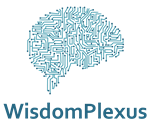Do you recall learning your first language? The babbling, the imitation, and the gradual acquisition of vocabulary until you could suddenly make yourself understood. Behind every smooth AI interaction lies a similar journey of language acquisition. It happens through carefully built lexicons. These AI lexicons, basically specialized dictionaries, are the unsung heroes of AI systems.
They're why your phone understands when you ask about tomorrow's weather and how customer service chatbots know the difference between "I'm frustrated" and "I'm furious." But unlike human language learning, which happens organically through years of interaction, AI lexicons require meticulous human curation and machine intelligence.
What Is an AI Lexicon?
A specialized vocabulary database called AI Lexicon associates words, phrases, and expressions with their meanings and connections. It is a meticulously organized dictionary that doesn't just define terms but establishes how they connect to one another. Slang terms and industry jargon are among the many things found in these lexicons.
They also capture the nuanced ways humans communicate in different contexts. The most sophisticated AI lexicons incorporate sentiment analysis tags, disambiguation markers, and domain-specific terminology. They all work together like synapses in our brains to transform random strings of text into meaning.
Without these language maps that have been painstakingly constructed, even the most advanced computational systems would be akin to toddlers trying to read Shakespeare: Even if they can see the words, they have no idea what they imply!
Why Can't AI Work Without Lexicon?
What would happen if you couldn't understand anything spoken or road signs while traveling through a foreign nation? Without a suitable lexicon, AI would have to deal with it. These language foundations provide the critical context that transforms statistical pattern recognition into something approximating understanding.
Without AI lexicons, language models would struggle with homonyms (words that sound the same but have different meanings). In specialized domains like medicine or law, where a single misinterpreted term could have serious consequences, domain-specific AI lexicons are non-negotiable. Large datasets and professional curation are used to create these specialized knowledge frameworks.
What Are The Key Elements Of An Efficient Lexicon?
-
- Exhaustive vocabulary coverage that spans both common and specialized terminology.
- Semantic relationship mapping shows how concepts interconnect beyond simple definitions.
- Context-specific definitions that recognize words change meaning in different situations.
- Sentiment and emotional valence indicators that capture the subtle emotional tones words carry.
- Cross-cultural variations and localization account for how language differs across regions and communities.
- Domain expertise encoded in specialized subsections for fields like medicine, law, or engineering.
- Regular updates and maintenance processes that capture evolving language and new terminology.
Lexicon Based Sentiment Analysis
The specialized emotion dictionaries categorize words and phrases by their emotional weight. They tag "delighted" as strongly positive, "adequate" as neutral, and "horrific" as deeply negative. When processing customer feedback or social media mentions, systems use these sentiment lexicons to gauge public opinion without human reviewers needing to read thousands of comments.
Sophisticated sentiment lexicons don't just tag individual words but capture how combinations shift meaning (think "not bad" versus just "bad") and how sentiment intensifies or diminishes with modifiers.
The most effective sentiment lexicons go beyond the binary positive/negative division that dominated early attempts. Modern implementations incorporate emotional dimensions like arousal (calm vs. excited), dominance (feeling in control vs. overwhelmed), and specific emotional states like anticipation or disgust.
How Lexicon Works For An AI Model?
AI Lexicons feed directly into the neural machinery that powers language models. Tokenization is the initial step taken when text enters the system, which divides sentences into manageable pieces. These tokens then transform into numerical vectors within multidimensional space, where the proximity between words like "hospital" and "doctor" reflects their semantic relationships.
Recurrent Neural Networks (RNNs) traditionally processed these representations sequentially. The transformer architecture revolutionized this approach by introducing attention mechanisms—essentially allowing the model to "look" at all words simultaneously and determine which connections matter most.
Modern systems like GPT (Generative Pre-trained Transformer) take this further through pre-training on vast text collections, absorbing lexical relationships from billions of examples before fine-tuning for specific tasks. The lexicon doesn't just exist as a static dictionary but becomes embedded within the neural weights themselves.
Conclusion
As new slang emerges from TikTok trends and technical jargon proliferates across specialized fields, AI lexicons must become dynamic and self-updating. We're likely heading toward systems that autonomously identify semantic shifts. These adaptive lexicons won't just passively record language but will develop an intuitive understanding of why certain expressions catch fire while others fade away.
Specialized lexicons might bridge the communication gaps between different fields of expertise. The goal of lexicons in the future is to assist humans in understanding one another, removing the obstacles that sometimes arise from specialized vocabulary, rather than merely training machines to understand humans better. As these systems mature, they may become the invisible linguistic infrastructure.
To stay informed about new technologies, visit WisdomPlexus.
Recommended For You:




